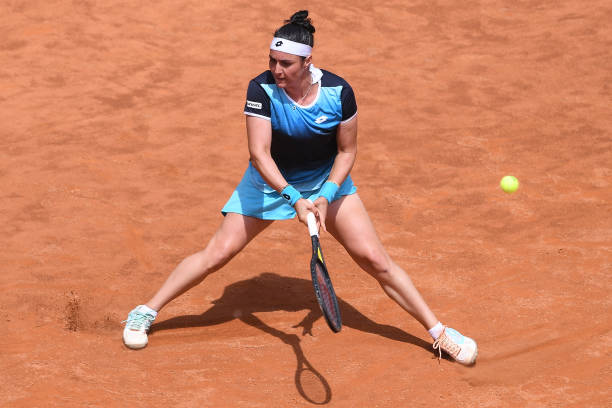Tennis is a sport with great traditions and heritage, but it does sometimes feel pre-historic. This has been highlighted this past week at the Italian Open in Rome, where the tennis gender pay gap for the men and women at the same tournament is staggering.
Rome prize money next week. Same points, same status, same stage. The only thing that would make this bearable is if Taylor Swift wrote a song about it. pic.twitter.com/CutdQuIybL
— Catherine Whitaker (@CWhitakerSport) May 8, 2022
Novak Djokovic, the winner of the men’s tournament, received €836,355. Whereas Iga Swiatek, who won the women’s event, earned less than 40% of that. Considering both were playing best-of-three set matches all week, against the same number of opponents, under the same ticket, make this feel very unjust to say the least.
Even the runner up in the men’s final, Stefanos Tsitsipas, collected more prize money than Swiatek. The worst thing about this whole situation is that a recent study by money.co.uk has shown that tennis has the lowest gender pay gap in sports, despite men still earning 34.32% more than their female counterparts.
Timeline of Events in the Fight for Equality so Far
1972 – World #1 tennis player Billie Jean King won the US Open, however she was taking home $15,000 less than the men’s winner, Ilie Năstase.
1973 – Ahead of Wimbledon, King barricaded 63 players in the Gloucester Hotel in London and officially formed the Women’s Tennis Association.
She threatened to boycott the US Open later that year, unless the prize money was made equal. Due to her power in the game at the time, her wish was granted and both men and women would be rewarded with $25,000 each for winning the tournament.
Following this, she accepted the challenge from infamously sexist male tennis player Bobby Riggs to a best-of-five sets match, with a reward of $100,000.
Riggs had said that ‘he would win, because women are emotionally unstable’. He could not have been more wrong, as King cruised to a dominant straight sets win in a match that has been dubbed as the ‘battle of the sexes’.
1984 – The Australian Open became the second Grand Slam to enforce equal pay. However, between 1996 and 2000 they went back on this.
2001 – Australia re-joined the US in paying men and women equal prize money.
2006 – The French Open followed suit, with only Wimbledon to go.
2007 – Wimbledon completed the set, and since then all four Grand Slams have paid the male and female players the same prize money.
Although this had been a big push for equality, the equal prize money at Grand Slams has faced some backlash. At these tournaments, men play best-of-five set matches, whereas the women play best-of-three, which is a whole other issue in itself. This has brought up the argument from some that as the men play more tennis, they should receive greater prize money.
2021 *singles* prize money leaders:
Grand Slams vs Tour events– 13 women earned $1M+ at Grand Slams (no dominant players) compared to 6 men;
– 11 men earned $1M+ in ATP Tour events compared to 4 women in WTA Tour ones as men’s tour offers bigger prize money than the women’s pic.twitter.com/OlTP3dLfg7— Oleg S. (@AnnaK_4ever) December 21, 2021
The chart above shows the difference in pay between the men and the women in 2021. The Grand Slam pay is a representative of equality in tennis, whereas on the right shows the pay on the tour where they both play best-of-three sets, which is very unequal.
The highest paid woman on the tour in 2021 was Garbine Muguruza, but she still received less than half of the top male earner, Alexander Zverev. This cannot be right, and the fact that the ‘most progressive’ sport in terms of gender equality still has a 34.32% pay gap shows the work that still needs to be done.
Main photo:
Embed from Getty Images






